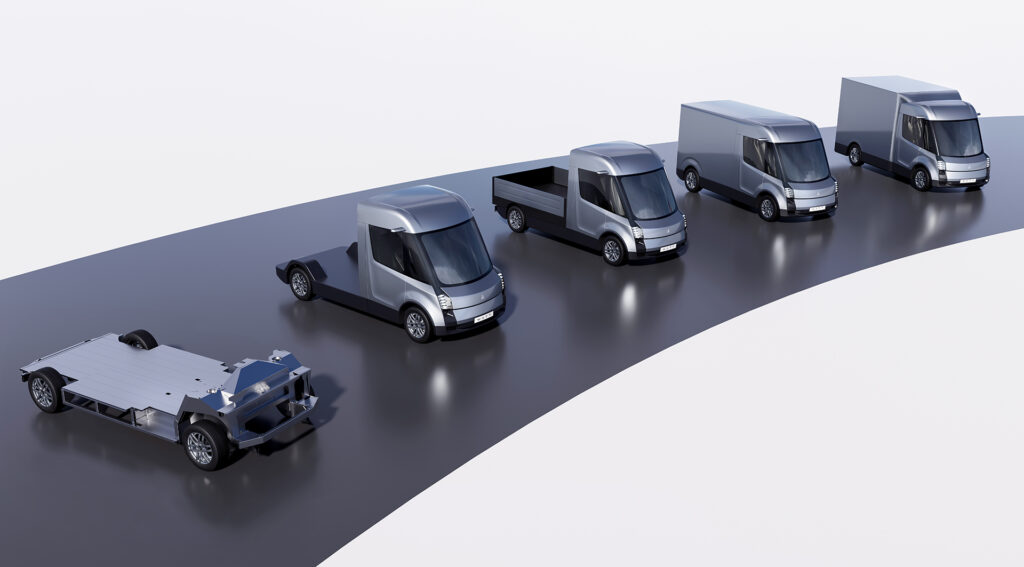Cornwall-headquartered Watt Electric Vehicle Company (WEVC) has revealed its electric light commercial vehicle platform, codenamed WATT eCV1.
The chassis-cab product set aims to provide the foundation for next-generation electric light commercial vehicles, according to WEVC.
Designed for production of up to 5,000 vehicles annually, the 3.5-tonne cab and chassis unit will enable a wide range of electric commercial vehicle designs, facilitating mission-specific models that meet customers’ particular fleet requirements.
The cell-to-chassis system means batteries are integrated into the primary structure (rather than having a separate battery pack), thus optimising stiffness, minimising weight and maximising payload. As a result, the clean sheet design means the eCV1 has none of the structural, weight and packaging compromises inherent in most electric light commercial vehicle designs, many of which have been converted from internal combustion engine drivetrains and which are constrained by traditional high volume manufacturing processes.
The eCV1 range features a central driving position, which allows a safer kerbside exit for the operator, on whichever side of the road the vehicle is driving or parked on. The cabin can be configured as a one-, two- or three-seater vehicle . The large glasshouse provides superb visibility, making the vehicle safer to drive and easier to manoeuvre and park. A further benefit of the central driving position is that it has allowed the A-pillars to be repositioned inboard, thus reducing frontal area and drag, a key metric in designing an efficient electric commercial vehicle. The unique platform design creates generous full standing height headroom, facilitating easy ingress and egress and a ‘walk through cabin’ option that is ideally suited for urban delivery vehicles.
The eCV1 will incorporate PACES architecture, which will minimise weight, deliver class-leading payload and reduce energy consumption for lower running costs.
